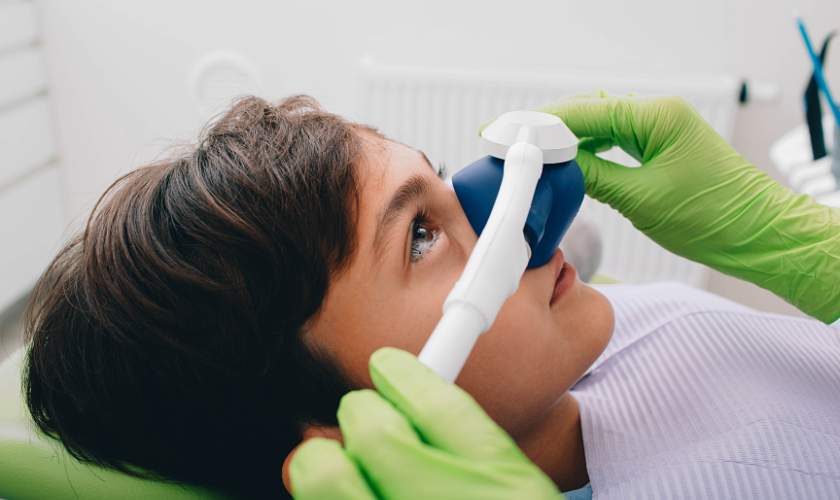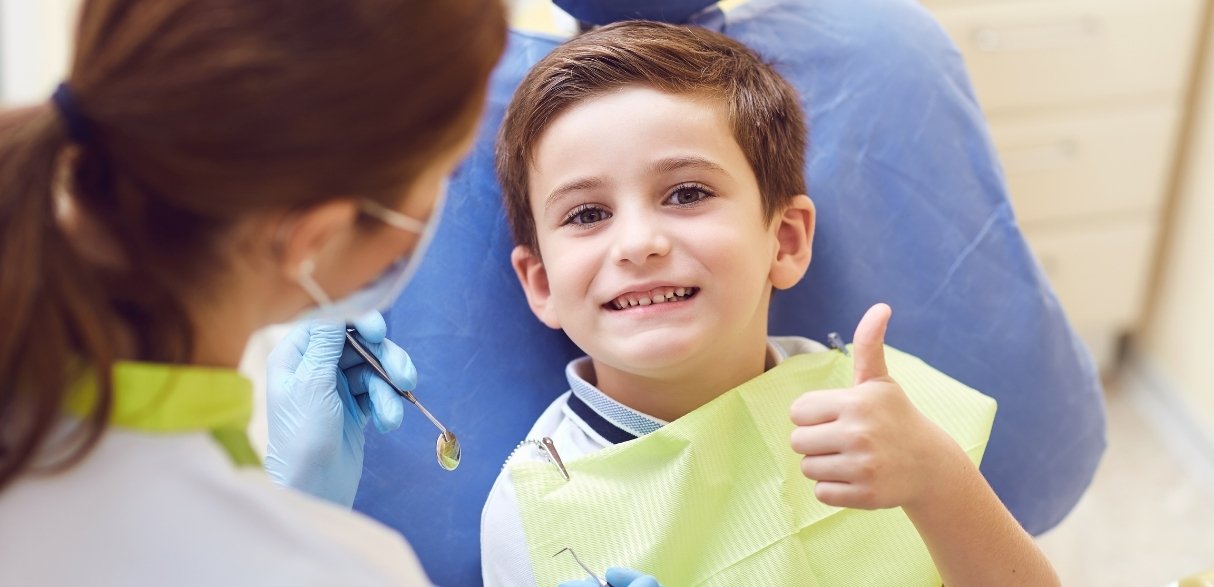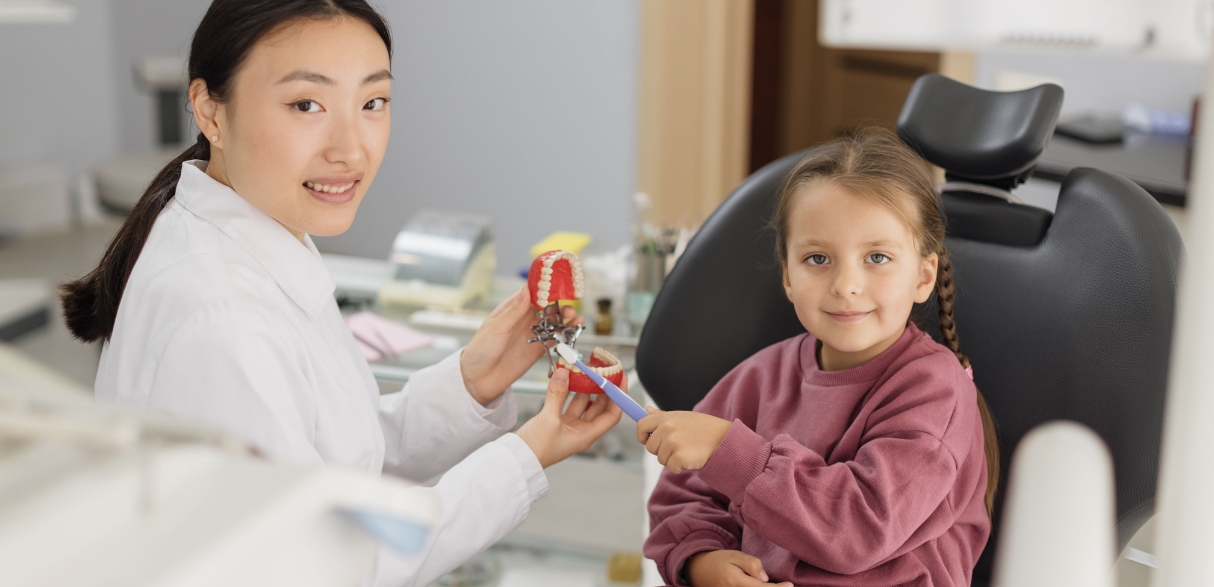
Pediatric dentistry is a dynamic and evolving field, constantly introducing innovative techniques and technologies to improve the dental care experience for children. With a strong emphasis on prevention, comfort, and overall health, modern pediatric dentistry aims to make dental visits positive and stress-free for young patients. From the integration of digital tools to the adoption of eco-friendly practices, these trends are shaping the future of children’s dental care. Whether you’re a parent looking to ensure the best oral health for your child or simply curious about the latest advancements, this blog provides a comprehensive look at the exciting developments in pediatric dentistry. Read on to discover how these trends are transforming smiles and promoting lifelong dental health.
Emphasis on Preventive Care
Preventive care is becoming a cornerstone of pediatric dentistry. This approach focuses on maintaining oral health and preventing dental issues before they develop. Regular dental check-ups, cleanings, and fluoride treatments are crucial components. Educating children and parents about proper oral hygiene practices, such as brushing twice a day, flossing daily, and maintaining a balanced diet, is a significant part of this trend.
Minimally Invasive Techniques
The shift towards minimally invasive techniques is gaining momentum. These methods aim to reduce discomfort and anxiety associated with dental procedures. For instance, silver diamine fluoride (SDF) is being used to halt tooth decay without the need for drilling. This painless treatment involves applying a liquid that prevents cavities from progressing, making it an excellent option for young children.
Digital Dentistry
Digital technology is revolutionizing pediatric dentistry. For example, offer several advantages over traditional radiographs, including reduced radiation exposure and immediate image availability. Intraoral cameras provide a detailed view of the mouth, allowing dentists to identify problems early. Additionally, digital impressions have replaced traditional molds in many practices, making the process more comfortable for children.
Sedation Dentistry

Sedation dentistry is becoming more common to help children who experience dental anxiety. Various levels of sedation, from mild (nitrous oxide) to deep sedation, are tailored to the child’s needs. This trend ensures that children receive necessary dental care in a stress-free environment. Proper sedation dentistry management by trained professionals ensures safety and comfort throughout the procedure.
Laser Dentistry
Laser dentistry is an exciting advancement that offers a painless and efficient alternative to traditional dental tools. Lasers can treat cavities, perform frenectomies, and address gum issues with minimal discomfort and faster healing times. This technology reduces the need for anesthesia and lowers the risk of infection, making it ideal for pediatric patients.
Orthodontics for Young Children
Early orthodontic intervention is another emerging trend. Recognizing and correcting bite issues at a young age can prevent more severe problems later in life. Devices like palatal expanders, braces, and clear aligners are now being used to guide the development of a child’s teeth and jaw. Early treatment not only improves aesthetics but also contributes to better oral health.
Eco-Friendly Practices
Sustainability is influencing pediatric dentistry. Eco-friendly practices, such as using biodegradable dental products and reducing waste, are being adopted by many dental offices. This shift not only benefits the environment but also sets a positive example for young patients about the importance of environmental responsibility.
Tele-dentistry
The rise of tele-dentistry has made dental care more accessible. Virtual consultations allow parents to seek professional advice without leaving home. This trend is particularly beneficial for routine check-ups, follow-up appointments, and minor dental concerns. Tele-dentistry provides a convenient way to ensure continuous dental care, especially in remote or underserved areas.
Customized Preventive Programs
Personalized preventive programs are tailored to meet the specific needs of each child. Dentists Chatsworth are now using risk assessments to create individualized plans that address a child’s unique oral health challenges. These programs often include dietary advice, personalized oral hygiene instructions, and regular monitoring to ensure optimal dental health.
Integrating Technology and Education
Educational tools and technology are being integrated into dental visits to make learning about oral health engaging for children. Interactive apps, virtual reality experiences, and educational games are being used to teach kids about brushing techniques, the importance of flossing, and the effects of sugar on teeth. This interactive approach makes dental visits fun and informative.
Focus on Overall Health
There is a growing recognition of the connection between oral health and overall health. Pediatric dentists are increasingly collaborating with other healthcare providers to ensure comprehensive care. Conditions such as sleep apnea, diabetes, and obesity can impact oral health, and addressing these issues holistically improves a child’s overall well-being.
Advancements in Dental Materials
The development of new dental materials is enhancing the durability and aesthetics of pediatric dental treatments. Tooth-colored fillings, for example, blend seamlessly with natural teeth, providing a more attractive alternative to traditional silver fillings. These materials are not only aesthetically pleasing but also safe and effective for children.
Culturally Competent Care
Providing culturally competent care is essential in today’s diverse society. Pediatric dentists are being trained to understand and respect cultural differences that may affect dental care practices. This approach ensures that all children receive appropriate and respectful care, regardless of their cultural background.
Patient-Centered Design
The design of dental offices is evolving to be more child-friendly. Bright colors, themed decor, and play areas help create a welcoming and comfortable environment. Some offices even feature sensory-friendly spaces for children with special needs. This patient-centered design helps reduce anxiety and makes dental visits more enjoyable for young patients.
Importance of Early Dental Visits
Emphasizing the importance of early dental visits is a significant trend. The American Academy of Pediatric Dentistry recommends that children visit the dentist by their first birthday. Early visits help establish a dental home and allow for the early detection of potential issues. They also provide an opportunity for parents to receive guidance on proper oral care for their infants and toddlers.
Incorporating Nutritional Counseling
Nutritional counseling is becoming an integral part of pediatric dental care. Dentists educate parents and children about the impact of diet on oral health, emphasizing the importance of reducing sugar intake and consuming a balanced diet rich in fruits, vegetables, and dairy products. This holistic approach helps prevent cavities and promotes overall health.
Focus on Special Needs Dentistry
Providing specialized care for children with special needs is an important trend. Pediatric dentists are receiving additional training to address the unique challenges faced by these patients. This includes understanding medical conditions, behavioral management techniques, and creating a supportive environment to ensure that all children receive the best possible care.
Collaboration with Orthodontists
Collaboration between pediatric dentists and orthodontists is becoming more common. This teamwork ensures that any orthodontic issues are identified and addressed early. Early intervention can guide the proper development of the teeth and jaw, potentially reducing the need for more extensive treatments in the future.
Research and Continuing Education
Ongoing research and continuing education are critical to advancing pediatric dentistry. Dentists stay updated on the latest techniques, materials, and best practices through professional development opportunities. This commitment to learning ensures that children receive the most up-to-date and effective care available.
Building Trust with Young Patients
Building trust with young patients is essential for successful pediatric dental care. Dentists use a variety of techniques to create a positive and reassuring experience. These include explaining procedures in simple terms, using gentle approaches, and rewarding cooperative behavior. Building trust helps children feel more comfortable and reduces anxiety during dental visits.
Addressing Dental Phobias
Addressing dental phobias is a crucial aspect of pediatric dentistry. Dentists use behavior management techniques, such as positive reinforcement and desensitization, to help children overcome their fears. Creating a supportive and understanding environment is key to helping children develop a positive attitude towards dental care.
Emphasizing the Role of Parents
Educating and involving parents in their child’s dental care is a growing trend. Dentists provide parents with the knowledge and tools needed to support their child’s oral health at home. This includes guidance on proper brushing and flossing techniques, dietary recommendations, and the importance of regular dental visits.
Community Outreach Programs
Community outreach programs are playing a vital role in promoting pediatric dental health. These programs provide dental care and education to underserved populations, ensuring that all children have access to essential dental services. Outreach initiatives often include free dental screenings, oral hygiene education, and distribution of dental care supplies.
Future Innovations
The future of pediatric dentistry holds exciting possibilities. Advances in genetics, regenerative medicine, and artificial intelligence are expected to revolutionize the field. These innovations promise to enhance diagnostic accuracy, improve treatment outcomes, and make dental care more accessible and effective for children.
As we continue to see these trends evolve, it’s clear that the focus remains on providing the best possible care for young patients. By embracing new technologies, techniques, and approaches, pediatric dentistry is poised to make significant strides in promoting and maintaining children’s oral health.
In Chatsworth, parents can rely on their local dental professionals to stay abreast of these trends and provide top-notch care for their children. Dentist offers comprehensive services tailored to meet the unique needs of young patients, ensuring that every child has a positive dental experience. For a Pediatric Dentist Chatsworth residents trust, staying updated on these latest trends is key to ensuring optimal oral health for the youngest members of the community.


